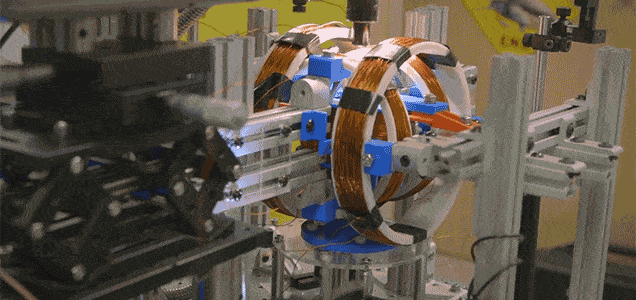Computers and water don’t mix well, but that didn’t stop Manu Prakash, a bioengineering assistant professor at Stanford, to think outside the box. Using magnetic fields and droplets of water infused with magnetic nanoparticles, Prakash demonstrated a computing system that performs logic and control functions by manipulating H2O instead of electrons. Because of its general nature, the water clock can perform any operations a conventional CPU clock can. But don’t expect this water-based computer to replace the CPU in your smartphone or notebook (electrons speed vs water droplet – not a chance). Instead, it might prove extremely useful in situations where logic operations and manipulation of matter need to be performed at the same time.
Water computer

As you can imagine, making a computer clock based on a fluid is no easy task. Prakash realized that one way to manipulate the flow is through an external magnetic field. He designed a series of T and I-shaped tiny pieces of iron and strategically placed them on a glass slide. Then another glass is placed on top with a layer of oil sandwiched in between. Water droplets infused with magnetic nanoparticles are then carefully infused into the system. Electromagnetic coils placed around the machine manipulate and direct the droplets, very similarly to how this ferrofluid artistic rendering work.

Depending on how they placed the metal shapes, the droplets would travel along a distinct pattern. Once the magnetic field is turned on, each rotation of the field is counted as one clock cycle. With each cycle, every drop marched exactly one step forward, as recorded in the video below.
The design of the iron tracks is essential, as Physics World reports:
“If the base was just a sheet of iron with no tracks, the droplets would travel around in circles, following the energy minima created by the field. However, by carefully designing the iron tracks and incorporating breaks at the right places, the researchers can create a “ratchet” effect whereby every complete rotation causes a droplet to move into an adjacent energy minimum. Therefore, instead of travelling in circles, a droplet moves in a specific direction through the circuit. Furthermore, by creating two tracks that are mirror images of each other, two droplets will rotate in opposite directions in response to the same field.”
Because of a combination of hydrodynamic and magnetic forces, the droplets repel each other. This is a good thing, since it keeps them separated and allows for the water-based equivalent of a digital transistor. If the droplet is in a specific location the value “1” is given, “0” if absent. Basically, this is the basis for a droplet logic gate. Since the machine works with fluids, virtually any kind of fluid chemical can be introduced into the computer. This way, scientists can sort and mix chemicals on the fly, while also performing computing operations. But the ultimate purpose isn’t to superseed a digital processor. It’s about much more than that – the “algorithmic manipulation of matter”, which enables enable us to “learn to manipulate matter faster… in a fundamentally new way.” Findings appeared in Nature Physics.
“Imagine, when you run a set of computations wherein not only information is processed but also the physical matter is algorithmically manipulated. We have just made this possible at the mesoscale,” Prakash said.
Next, Prakash and colleagues are concentrating on scaling down the design.






